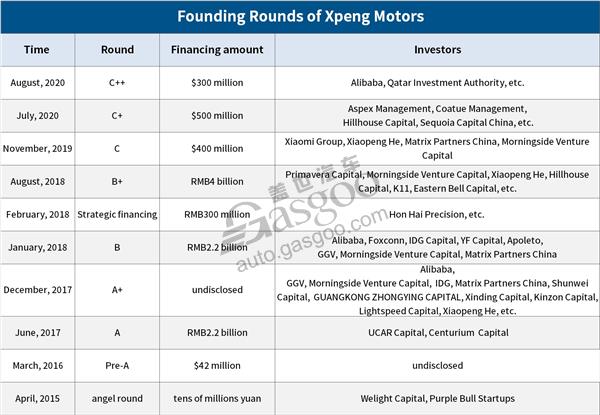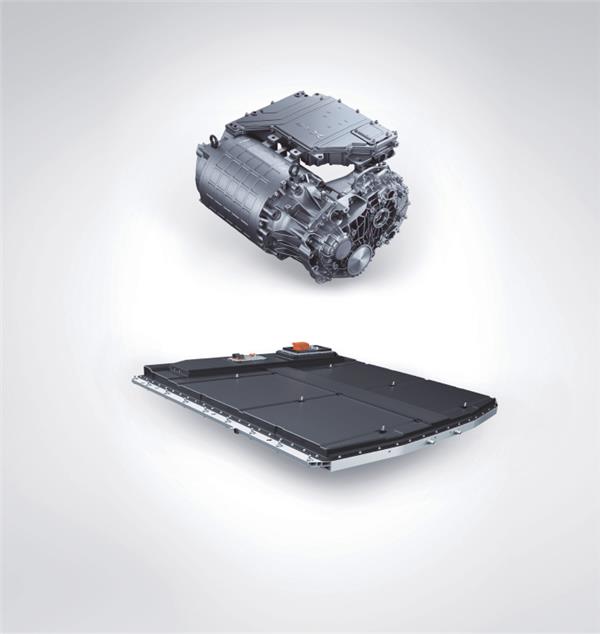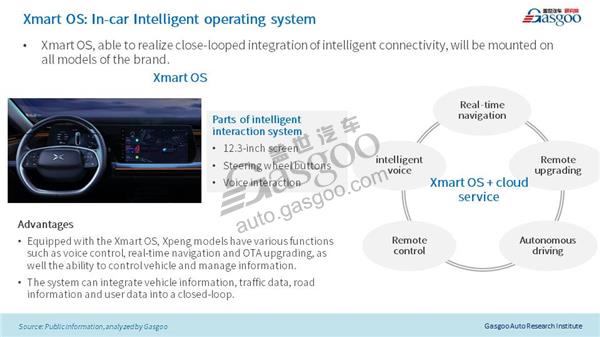What you need to know about Xpeng ahead of its IPO
Founded in 2015, Xpeng Motors, headquartered in Guangzhou, is a smart electric vehicle (EV) company, which design, develop, manufacture and market Smart EVs in China. With a commitment to in-house R&D and intelligent manufacturing, the company aims to bring Smart EVs to Chinese consumers through innovation in autonomous driving, smart connectivity and core vehicle systems.

(Xpeng P7, photo source: Xpeng Motors)
Staff and R&D investment
From the very beginning of its establishment, the company has attracted numerous talents from the internet, automobile, and technology industries. By the end of June, 2020, the automaker has a total of 3,676 employees in China and the United States, about 43% of which focuse on research and development. Almost all of its 91 employees in the United States are dedicated to the research and development of autonomous driving technology. Another 1,151 employees work for its sales and marketing while 617 employees work in manufacturing unit.

Apart from its global autonomous driving R&D center in Silicon Valley, the company also has an autonomous driving R&D center in Shanghai. Apart from the said centers, Xpeng also has a R&D center in Guangzhou for the design and development of complete vehicle and on-board systems.
The company’s expenses in R&D nearly doubled to RMB2,070.2 million (US$293.0 million) in 2019 on the basis of 2018. Last year, the company expanded his R&D team and increased the spending on the Smart EV platforms and new EV models. Since the research work relating to the P7 and the Edward platform has been substantially completed at the end of 2019, its expenses in R&D were lower in the first half of this year.
As of June 30, 2020, all directors and executives held a total of 40.9% stake in the company, 31.6% of which was held by Xiaopeng He and 4.9% held by Heng Xia. Taobao China Holding Limited,a wholly-owned subsidiary of Alibaba Group Holding Limited, has a 14.4% stake of the company.

Manufacturing and sales
In terms of manufacturing, the Xpeng G3 is produced through a contract manufacturing collaboration with Haima at its plant in Zhengzhou, Henan province. Besides, Xpeng has built its own plant in Zhaoqing, Guangdong province. In March, 2020, the company obtained manufacturing qualification via the acquisition of Guangdong FODAY Automobile, which produces complete vehicles like pickups, SUVs and SRVs, as well as vehicle bodies and auto parts. Two months later, the production of the P7 kicked off at its Zhaoqing plant, where it will make future models. The respective annual production of Haima plant and Zhaoqing plant will be up to 150,000 units and 100,000 units.
In January, 2018, the ready-to-sell production G3 made its debut at the International CES. At the end of 2018, the automaker started production of the G3. In April, 2019, the automaker unveils its P7 model at Auto Shanghai. One year later, the production and delivery started. As of July 31, 2020, Xpeng had delivered 18,741 units of the G3 and 1,966 units of the P7. In accordance with the company’s plan, its third Smart EV, a sedan, is set to come in 2021.

(Xpeng G3, photo source: Xpeng Motors)
By the end of the first half in 2020, the automaker has a total of 147 stores and service centers, which cover 52 major cities in China. To accelerate the expansion of its network, Xpeng rolls out franchised stores. As of June 30, 2020, it has 60 franchised stores and 43 franchised service centers.
Apart from vehicle sales, the company also generates revenue from services and others, such as ride-hailing service, finance lease, supercharging service and maintenance service. According to its IPO prospectus, revenues from services and others increased by 163.5% year on year to RMB89.6 million (US$12.7 million) for the first half in 2020, thanks to the increase in revenues from after-sales services, supercharging service as well as ride-hailing service. Furthermore, the company plans to roll out a vehicle software subscription model and will expand its subscription offerings to include other premium features in the future.
Efforts in EV
In terms of vehicle platform, Xpeng is the only startup in China which boasts two smart EV platforms, scalable for both SUVs and sedans with different wheelbases within a wide range, giving the automaker the capability to develop new models in a fast and cost-efficient manner.
As to the electric drive system, Xpeng put great weight on the in-house development of the integration and control systems, which is technically difficult but vital for a vehicle. The automaker has designed a three-in-one electric drive system for the P7, integrating an electric motor, a motor control unit and a fixed gear transmission into one platform. Featuring much more compact structure, the system weighs less and has higher power efficiency, which is important to the range and performance of an EV. Thanks to this system, the P7 set a new benchmark for battery electric passenger vehicles with a range of 706km (about 439 miles) on a single charge, alleviating range anxiety.

(Three-in-one electric drive system; photo source: Xpeng Motors)
The automaker utilizes lithium NCM cells for batteries. The reason why it sources battery cells from other suppliers instead of making by itself is that this approach can offer the flexibility to use the latest technologies and help to save substantial costs. Its batteries are capable of rapid charging. For example, the P7’s battery pack can be charged from 30% to 80% of its battery capacity in less than 30 minutes.
Apart from designing its own pack and BMS systems, the automaker also designed high-performance electric motors for its Smart EV. For example, the P7 features permanent-magnet synchronous motors. Besides, it has developed its own electromagnetic solution, based on which the supplier can optimize electric motor.
Autonomous driving and in-car operating system
To Xpeng, autonomous is one of the key features that differentiate its products from other rivals, so the company has dedicated significant research and development efforts in this area. In terms of the development approach, Xpeng focuses on full-stack autonomous driving technology.
XPILOT, the name of its autonomous driving system, provides assisted driving and parking functions tailored for driving behaviors and road conditions in China. For example, the automaker has made extensive study on cutting in line, which is common in China. As a result of this study, the P7, its second model and first sedan, is mounted with multiple cameras to cover a 360-degree view of the surroundings of the vehicle.

XPILOT: 360-degree Perception; photo source: Xpeng Motors
Both models from the automaker, the G3 and the P7, are equipped with XPILOT 2.5, featuring adaptive cruise control, adaptive turning control, lane centering control, automated lane changing and automated parking. XPILOT 3.0, its upcoming autonomous driving system, will be introduced by early 2021. The new system will be powered by NVIDIA DRIVE AGX Xavier platform, featuring one of the most advanced and fastest processors designed for autonomous driving in commercial production. Comparing with XPILOT 2.5, the 3.0 system will come with such new functions as navigation guided pilot for highway driving and advanced automated parking.
According to the company, by June 30, 2020, over 90% of the G3 purchasers chose the versions with autonomous driving capabilities while about half of the P7 customers ordered the versions that can support XPILOT 3.0.
Besides, Xpeng’s models can be upgraded via over-the-air, or OTA, which is deemed as the most important difference between a mechanical equipment and an IT device. Combined with the closed-loop data vehicles collects, OTA firmware updates can help to optimize user experience in a timely manner.
The automaker also has its own in-car intelligent operating system, named Xmart OS to deliver a seamless, easy-to-use, and voice-controlled smart mobility experience. And its in-car app store allows users to conveniently access third-party services and infotainment.

In the future, Xpeng will continue to invest in technologies and launch a new model every year using common platforms. With the commitment to building the leading Smart EV brand, the company will expand its sales and super charging network and try to offer innovative subscription and value-added services.

